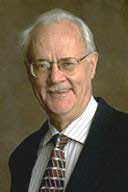In The Shaping of Things to Come, Michael Frost and Alan Hirsch provide some useful references points for contextual incarnational approaches to mission in new people groups.
Paul Hiebert is professor of mission and anthropology at Trinity Evangelical Divinity School in Deerfield, Illinois. He writes on anthropology, mission, folk religions, urban contexts and Hinduism.
Paul Hiebert’s framework for critical contextualisation of gospel in non-Christian contexts
- Examine host culture
- Study & teach Word of God
- People themselves corporately examine own past customs in light of new biblical understandings, make decisions re response to new found truths
- Congregation seek to arrange practices they have chosen, modified, & created into new set of rituals that contextually express Christian meaning
Suggestions from Hiebert
- Keep that which is not unbiblical
- Reject that which is unbecoming of Christians
- Modify practices to give them explicitly Christian meaning
- Reject current unbiblical practices & replace them
- Adopt rites drawn from Christian heritage
- Create new symbols & rituals
John Travis Model of Contextualization
John Travis is the pseudonym for a missionary living among Muslims. He found Muslims who continued within the Islamic culture while living as followers of Christ. His model of contextualisation was presented in an article, “Must All Muslims Leave Islam to Follow Jesus?”, published in Evangelical Missions Quarterly, vol. 34 no. 4, 1998.
John Travis’ spectrum for reaching Muslim communities
C1 Traditional church using outsider language
C2 Traditional church using insider language
C3 Contextualised Christ-centred communities using insider language & religiously neutral insider cultural forms
C4 Contextualised Christ-centred communities using insider language & Biblically permissable cultural & Islamic forms
C5 Christ-centred communities of Messianic Muslims who have accepted Jesus as Lord and Saviour
C6 Small Christ-centred communities of secret/underground believers
In the International Journal of Frontier Mission, Vol. 17:1, Spring, 2000, the guest editor Joshua Massey asked John about criticism by people such as Phil Parshall that the C5 category was a dangerous case of syncretism. John’s reponse:
What makes a particular Muslim ‘C5’ is that he has received Isa (Jesus) as Lord and Savior, meets regularly with other such believers, and yet is still seen as ‘Muslim’ through his or her own eyes, as well as the eyes of fellow Muslims. A C5 believer will certainly have different beliefs from other Muslims (e.g., Isa did die on the cross, Muhammad is not a prophet in the biblical sense, salvation is in Isa al-Masih and not in works). However, C5 believers remain in the Muslim community (i.e., they do not officially become members of a traditional church), and they still participate in Muslim cultural and religious practices – except for those contrary to Scripture. The simple fact is, I know individuals who are truly born again and living for Jesus, yet because of their upbringing, ethnicity, or community, simply see themselves as Muslims who have found salvation in Jesus.
John follows up his comments with an article, “Messianic Muslim Followers of Isa: A Closer Look at C5 Believers and Congregations“, in International Journal of Frontier Mission.
